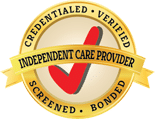
Parkinson's causes brain cells to stop producing dopamine, which leads to decreased balance and strength, slowed movement and tremors, and speech impairment. People living with PD often feel like they are at the mercy of the disease, but this doesn't have to be the case. Adding an exercise regimen can help control symptoms by improving stability, flexibility and management of tremors.
Exercises that specifically benefit Parkinson's patients:
- Walking and balancing drills
- Cardiovascular exercise
- Stretching
- Strength training (with and without weights)
- Core exercises
- Voice and facial exercises
Those with PD should follow a specific type of exercise regimen that is safe and effective, and targets specific areas affected by the disease. David Zid, a certified personal trainer and president of Columbus Health Works, has worked with Thomas H. Mallory, M.D. to create and publish a comprehensive exercise guide for sufferers of Parkinson's. Diagnosed with PD several years ago, Dr. Mallory has stuck to Zid's regimen and seen great results and improvement in his symptoms.
Their workbook and corresponding video detail specific exercises that are tailored to the Parkinson's patient, and emphasize a physical and mental commitment to not giving up. The program is designed to proactively improve flexibility, stability and strength while minimizing tremors, making daily activities such as standing up from a chair or walking on uneven ground easier. Not only can a targeted exercise regimen such as this help PD patients maintain independence, it can also give them much needed hope.
Dr. Mallory and David Zid give a thorough breakdown of exercises in each of these categories along with visual demonstrations in their workbook.
Why is exercise beneficial?
Exercise has been proven to be beneficial for everyone's general health, and aerobic activities can improve heart and lung function, as well as having noticeable benefits on the physical body. These physical benefits create a better quality of life for PD patients; however, in the case of Parkinson's, perhaps the most important aspect of exercise is the effect it has on the brain.
Exercise decreases anxiety and depression, but a recent study out of Pittsburgh has demonstrated that exercise also appears to prevent loss of brain cells that worsens PD. So, a program of tailored exercises plus medication can have a very positive effect on symptoms and vastly improve the quality of life for someone living with Parkinson's.
The most important thing to remember is that it is never too late to get started on a exercise regimen, to get control of symptoms and to start living a better quality life. When your ability to move improves, so does your feeling of accomplishment and sense of well being.
At American In-Home Care, we always refer qualified, screened, care providers that can assist you with your senior home care Florida needs, including exercises and companionship. Contact a Client Care Liaison at any time to set up a free assessment of your in-home care needs; they can provide you with additional information about which care options are right for you and your family. We are available to take calls 24/7 at 1-844-505-0004.

